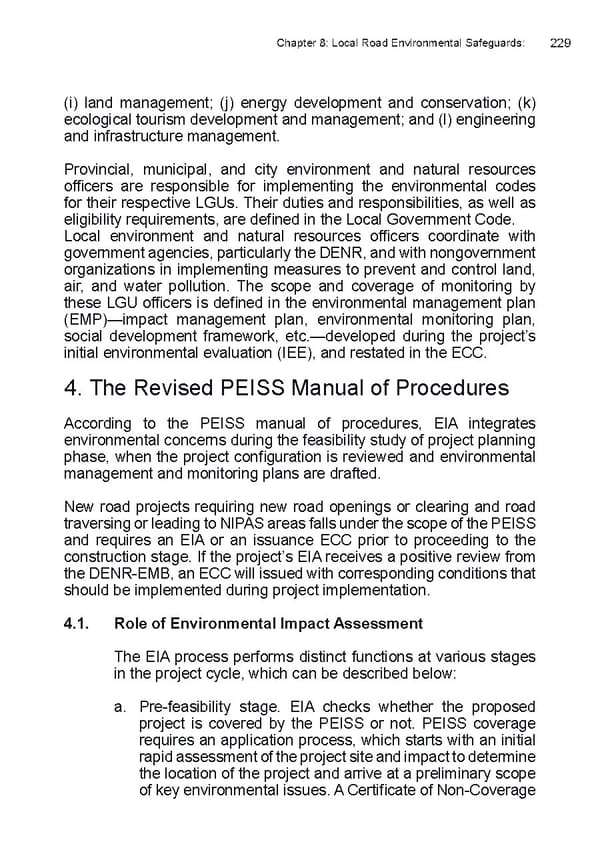Chapter 8: Local Road Environmental Safeguards: 229 (i) land management; (j) energy development and conservation; (k) ecological tourism development and management; and (l) engineering and infrastructure management. Provincial, municipal, and city environment and natural resources officers are responsible for implementing the environmental codes for their respective LGUs. Their duties and responsibilities, as well as eligibility requirements, are defined in the Local Government Code. Local environment and natural resources officers coordinate with government agencies, particularly the DENR, and with nongovernment organizations in implementing measures to prevent and control land, air, and water pollution. The scope and coverage of monitoring by these LGU officers is defined in the environmental management plan (EMP)—impact management plan, environmental monitoring plan, social development framework, etc.—developed during the project’s initial environmental evaluation (IEE), and restated in the ECC. 4. The Revised PEISS Manual of Procedures According to the PEISS manual of procedures, EIA integrates environmental concerns during the feasibility study of project planning phase, when the project configuration is reviewed and environmental management and monitoring plans are drafted. New road projects requiring new road openings or clearing and road traversing or leading to NIPAS areas falls under the scope of the PEISS and requires an EIA or an issuance ECC prior to proceeding to the construction stage. If the project’s EIA receives a positive review from the DENR-EMB, an ECC will issued with corresponding conditions that should be implemented during project implementation. 4.1. Role of Environmental Impact Assessment The EIA process performs distinct functions at various stages in the project cycle, which can be described below: a. Pre-feasibility stage. EIA checks whether the proposed project is covered by the PEISS or not. PEISS coverage requires an application process, which starts with an initial rapid assessment of the project site and impact to determine the location of the project and arrive at a preliminary scope of key environmental issues. A Certificate of Non-Coverage
 Local Road Management Manual Page 229 Page 231
Local Road Management Manual Page 229 Page 231